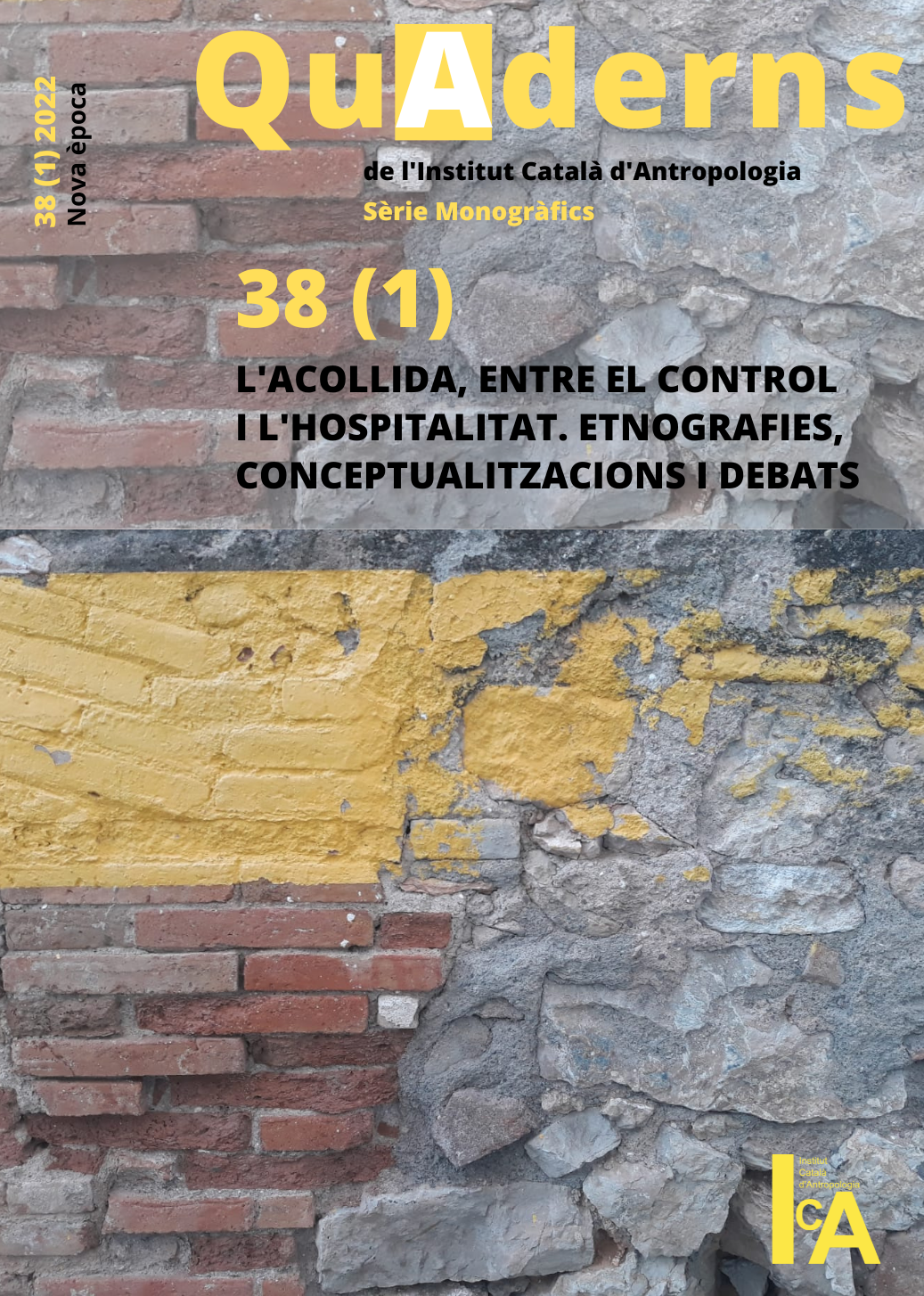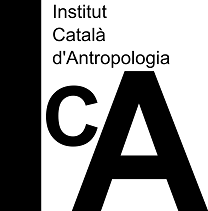The reception “on the move” of children and young people who migrate alone to Catalonia. A vision from professionals
DOI:
https://doi.org/10.56247/qua.396Keywords:
reception, unaccompanied minors, children on the move, socio-educational intervention, mobilitiesAbstract
The reception processes of the child protection system become the starting point for the accompaniment of unaccompanied minors and for the subsequent development of their socio-educational itineraries. Through semistructured interviews, we collected the vision of 15 educators from different centers, resources and organizations of the Catalan System of protection, mainly deployed with the Catalan Strategy for reception and inclusion. The results draw a protocolized reception system that moves in a “double normative bipolarity” as “minors susceptible to protect” and, at the same time, as subjects of immigration control. The analysis of the experience lived by this children from the perspective of the professionals who accompany them highlights situations of multiple mobility and immobility and allows a glimpse of the hidden and attributed meanings of their materialization. While passing through the reception system, they come across numerous “doors” that reinforce the funnel effect, conditioning their itineraries and translating too often into situations of exclusion. From the socio-educational attention we conclude that the reception has to make possible the construction of links to reposition it, dignify it and understand the power relations that condition it.
Downloads
Global Statistics ℹ️
|
895
Views
|
468
Downloads
|
|
1363
Total
|
|
References
Abderrahman, J. M., Ruiz, F. i Vilà, R. (2018). Historia de vida de un menor extranjero no acompañado de Melilla. https://dialnet.unirioja.es/servlet/articulo?codigo=6751923 Modulema: Revista científica sobre diversidad cultural, 2, 86-112.
ACNUDH (Oficina de l’Alt Comissariat de les Nacions Unides) (2016). Principios recomendados para orientar las acciones relativas a los niños en tránsito y otros niños afectados por la migración. Nacions Unides. http://principlesforcom.jimdo.com
Benavent, E. (2013). Espiritualidad y educación social. UOC.
Bhabha, J. (2019). Children on the move in the twenty-first century. Developing a rightsbased plan of action. Dins Suárz-Orozco, M., Humanitarianism and mass migration. Confronting the world crisis (pp. 83-98). University of California Press & Ross Institute.
Bluebond-Langner, M. i Korbin, J. E. (2007). Challenges and opportunities in the anthropology of childhoods: An introduction to “children, childhoods, and childhood studies”, American Anthropologist, 109 (2), 241-246. https://doi.org/10.1525/aa.2007.109.2.241
Bowlby, J. (2011). El apego y la pérdida. Paidós.
Bravo, A. i Santos-González, I. (2017). Menores extranjeros no acompañados en España: necesidades y modelos de intervención. Psychosocial Intervention, 26, 55-62 https://doi.org/10.1016/j.psi.2015.12.001
Butler, J. (2010). Marcos de guerra. Las vidas lloradas. Paidós.
Calvo, F. i Shaimi, M. (2020). Salut mental, sensellarisme i vulnerabilitat de joves extutelats, Educació Social. Revista d’Intervenció Socioeducativa, 75, 117-144.
Carrasco, S., Pàmies, J. i Ponferrada, M. (2011). Fronteras visibles y barreras ocultas: la experiencia escolar del alumnado marroquí en Cataluña y mexicano en California, Revista Migraciones, 29, 31-60.
Cebolla, H. i Requena, M. (2010). Marroquíes en España, los Países Bajos y Francia: gestión de la diversidad e integración. Real Instituto Elcano. https://media.realinstitutoelcano.org/wp-content/uploads/2021/12/ari11-2010-cebolla-requena-marroquies-diversidad-integracion-1.pdf
Cyrulnik, B. (2006). Los patitos feos: la resiliencia. Una infancia infeliz no determina la vida. Gedisa.
Departament de Treball, Afers Socials i Famílies (2021). Estratègia catalana per a l’acollida i la inclusió dels infants i joves emigrats sols. Generalitat de Catalunya.
Empez, N. (2020). Creciendo y viendo crecer: Trabajando como Educadora Social con jóvenes migrados, RES, Revista de Educación Social, 30, Enero-Junio, 96-106.
García Castaño, F. J., Megías Megías, A. i Ortega Torres, J. (eds.), Actas del VIII Congreso sobre Migraciones Internacionales en España (Granada, 16-18 de septiembre de 2015) (pp. S16/106-S16/120). Instituto de Migraciones
Gilligan, C. (2014). Moral injury and the ethic of care: reframing the conversation about differences, Journal of Social Philosophy, 45 (1), 89-106.
Glick-Schiller, N. i Salazar, N. B. (2013). Regimes of Mobility Across the Globe, Journal of Ethnic and Migration Studies, 39 (2), 183-200. https://doi.org/10.1080/1369183X.2013.723253
Gómez Mundó, A. (2012). Sabers i sentits de l’educació social. Sostenir l’ofici. Editorial UOC.
Gutman, L. (2009). La revolución de las madres. Integral.
Ioannidis, P., Dimou, E. i Dadusc, D. (2021). Sappers of Fortress Europe: Exploring the Micropolitics of Borders through the Occupational Culture of Asylum Caseworkers in Greece. Journal of Ethnic and Migration Studies, 47 (15): 3641-3659. https://doi.org/10.1080/1369183X.2021.1873114.
Kohli, R. (2006). The sound of silence: Listening to what unaccompanied asylum seeking children say and do not say. British Journal of Social Work, 30, 707-721.
Marco, E. (2017). Dispositivos de control y reproducción de desigualdades en la intervención con jóvenes migrantes, RASE, Revista de la Asociación de Sociología de la Educación, 10 (1), 50-63. https://doi.org/10.7203/RASE.10.1.9268
Martínez, O. (2020). Habitar recursos residenciales. Trabajar donde el otro está viviendo. UOC.
Martín-Palomino, E. (2012). Las migraciones de menores no acompañados desde una perspectiva de género, Dilemata, 10, 65-84.
Meirieu, P. (2001). La opción de educar: ética y pedagogía. Octaedro.
Mels, C., Derluyn, I. i Broekaert, E. (2008). Social support in unaccompanied asylum-seeking boys: A case study, Child: Care, Health and Development, 34, 757-762.
Patton, M. Q. (1990). Qualitative evaluation and Research Methods. Sage.
Peláez, P. (2018). El estado de la cuestión sobre los derechos de los MENAS en España: entre la protección y el abandono, RES, Revista de Educación Social, 27, Julio-Diciembre, 48-70.
Perazzo, C. i Zuppiroli, J. (2018). Los más solos. Save the Children.
Perelló, M. I. (2015). Política migratoria en la frontera sur de España con Marruecos: sus consecuencias y el papel de las organizaciones de la sociedad civil, dins García Castaño,
Sánchez-Rincón, N. (2020). La acogida en educación como principio esencial para el encuentro con el otro, Revista de Investigaciones UCM, 20 (35), 24-38.
Sassen, S. (2014). Expulsions: Brutality and Complexity in the Global Economy, Cambridge: Belknap Press.
Sheller, M. i Urry, J. (2006). The new mobilities paradigm, Environment and Planning A, 38 (2), 207-226.
Suárez, L. (2004). Niños entre fronteras: migración de menores no acompañados en el mediterráneao occidental, Migración y Desarrollo, 2, 35-48.
Vieira, A., Marques, J. C., Prata, M. i Vieira, R. (2017). The inclusion of the other in ourselves: reception and comprehension of refugees in Portugal. Intercultural Education, 28 (2), 196-205. https://doi.org/10.1080/14675986.2017.1308658
Vilà, R., Freixa, M., Sánchez, A., Massot, I. i Ruiz, F. (2020). Los mal llamados “Menores extranjeros no acompañados” (MENA) en Barcelona desde la visión de las y los educadores. Dins, C. Peréz. et al., La convivencia escolar: un acercamiento multidisciplinar a las nuevas necesidades (pp. 107-118). Dykinson.
Venceslao, M. i Marí, R. (2021) Intervención educativa en centros de justicia juvenil. Una aproximación a sus discursos y prácticas, Pedagogía Social. Revista Interuniversitaria, 38, 181-193. DOI: 10.7179/PSRI_2021.38.12
Vinaixa, M. (2019). La mayoría de edad: un mal sueño para los menores extranjerosno acompañados. Cuadernos de derecho transnacional, 11 (1), 571-602. https://doi.org/10.20318/cdt.2019.4633
Wade, J., Sirriyeh, A., Kohli, R. i Simmonds, J. (2012). Fostering unaccompanied asylum-seeking young people: creating a family life across a ‘world of difference’. BAAF Adoption and Fostering.
Wal Pastoor, L. de (2017). Reconceptualising refugee education: exploringthe diverse learning contexts of unaccompanied young refugees upon resettlement. Intercultural Education, 28 (2), 143-164. https://doi.org/10.1080/14675986.2017.1295572
Westwood, J. L. (2012). Constructing risk and avoiding need: Findings from interviews with social workers and police officers involved in safeguarding work with migrants childrens. Child Abuse Review, 21, 349-361.
Downloads
Published
How to Cite
Issue
Section
License
Distributed under the terms of the Creative Commons Attribution 4.0 International Use and Distribution License (CC BY-NC-SA 4.0)




